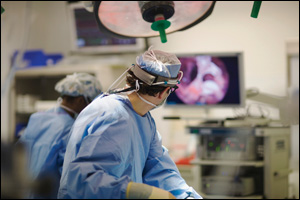Since the 1970’s, General Digital has played the role of an engineering design and consultation company, a manufacturer of flat panel display products, and a software development, test and verification house.
To our customers’ benefit, we perform a variety of laboratory processes that quantify or enhance the capabilities of our LCD and monitor products. One is our display calibration and matching process, which provides our customers with cross display image uniformity and true-to-life image reproduction.
Following is a brief list of Frequently Asked Questions intended to better inform the reader of our display calibration and matching process.
“What optical characteristics of a display does General Digital calibrate?”
Display calibration and matching (DCM) ensures that multiple monitors operated side by side—such as in an air traffic control tower or a shipboard navigation system—appear identical. This is accomplished by calibrating display attributes to a common standard, or to a customer-specific criteria. The following display attributes can be calibrated:
- Brightness
- Black level
- Contrast
- HueRGB (Color)
- Gamma values for each color channel over 10 gray scale levels
“What are the benefits of display calibration?”
The importance of display calibration cannot be overstated. Involving the use of both hardware and software elements, it ensures that a display is efficiently operating at its full quality capabilities. In fact, display settings that degrade the performance of panels can be adjusted to optimal values during calibration. The primary benefits of matching monitors to each other are:
- Consistent image appearance across all calibrated and matched monitors, which is critical in certain applications, such as medical imaging
- Longer display life as a result of allowing backlights to operate at their most efficient levels
- Greater picture quality by adjusting color temperature so that it conforms to D65 standards (The D65 standard is a representation of daylight at a correlated color temperature of approximately 6500 K. D65 is used extensively in industries that require a simulation of natural daylight, such as digital art, film, photography, colorimetry and other visually demanding applications.)
- Lower power consumption may be achieved in cases where higher brightness levels are unnecessary
- Lower image distortion by evaluating the entire video signal path and any “picture enhancement options” which may introduce noise into the video signal, thereby causing a decrease in picture resolution, detail and accuracy
“How is display calibration performed?”
General Digital-trained technicians set up the target monitors in our Optics Laboratory. The monitors are connected to high performance video generators and colorimeters. Special software is run to analyze the monitors under a wide range of video modes and test conditions to gather performance data, which is analyzed to determine optimal calibration. After calibration is successfully performed, a calibration certificate is generated that summarizes the user adjustable video settings, so that the values can be restored if unintentionally modified.
“What markets benefit from this service?”
Markets include air traffic control, shipboard navigation, medical imaging, video walls, to name just a few. Anywhere two or more monitors are arranged in close proximity, DCM can make the difference between a professional appearance and a catastrophic experience.
“On which of its display products does General Digital perform this service?”
General Digital can perform the DCM process on any of its monitors and display kits, from 5″ to 65″ LCDs incorporating various technologies. Also, many organizations send their displays to General Digital’s Optical Bonding Laboratory (OBL) for bonding or other optical enhancements. We can calibrate these displays to D65 standards, achieving a full range of accurate picture colors, provided they are supplied with all of the required electronics and final display overlays (see below).
“What is needed to properly calibrate a monitor or display?”
For a proper calibration, we ensure that we have, at minimum, the display(s) or monitor(s) complete with overlays, film work, backlight, backlight controller and LCD controller. Note that we use LCD controllers compatible with our in-house equipment; for third-party displays, we require the same.
“How often should a monitor or display be calibrated?”
General Digital recommends that calibration be performed once a year, after the initial calibration, in order to enjoy and maintain all of the benefits associated with display calibration and matching.
Calibration for the ages
With the many benefits it offers, high quality display calibration and matching ensures that our customers get the most out of their display or monitor. General Digital performs this process as part of our commitment to providing superior quality display products. Our specialized equipment coupled with our stellar experience means your monitors and displays are optimized to the highest level attainable. And with that, General Digital will provide maintenance and support for years to come.



